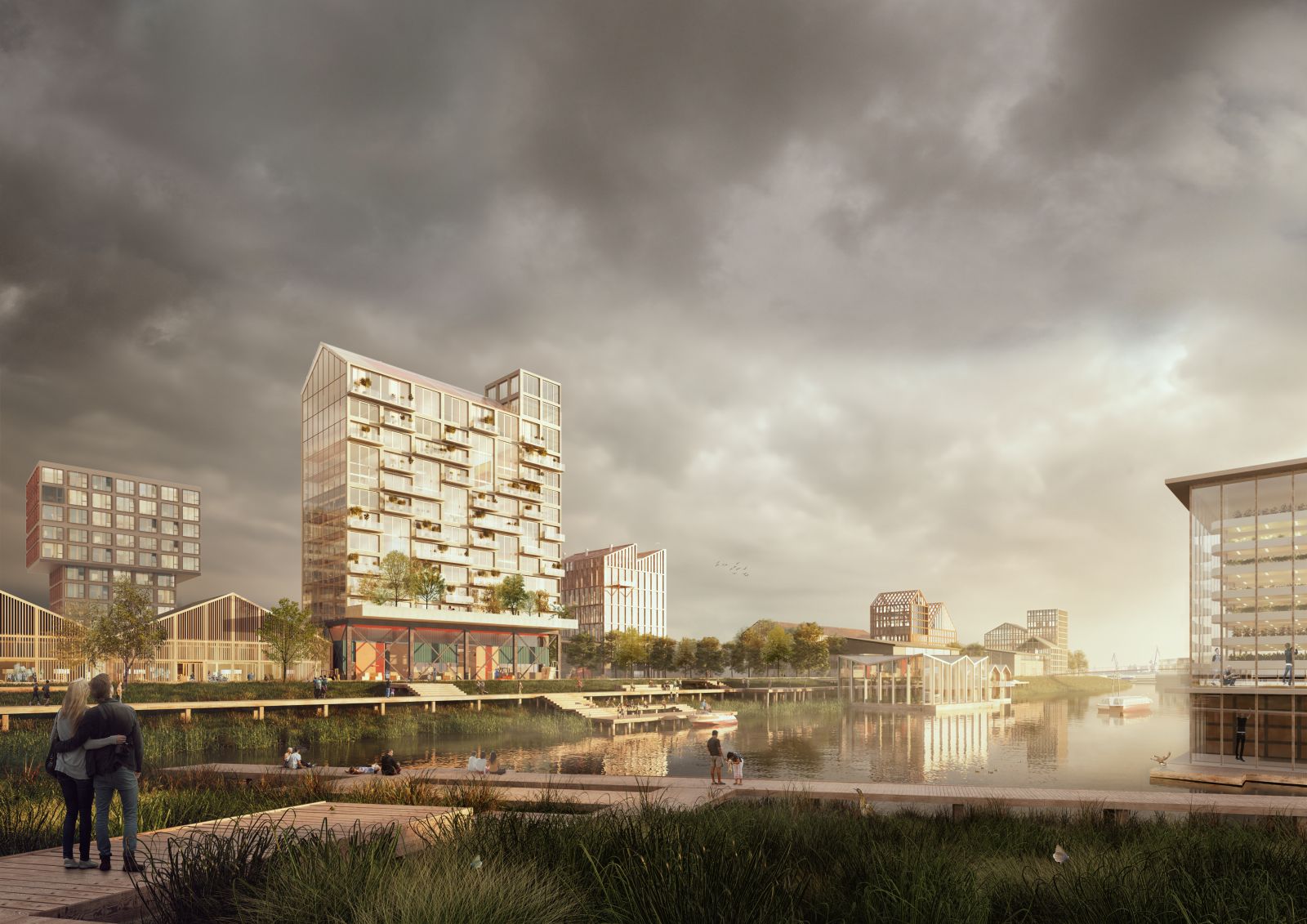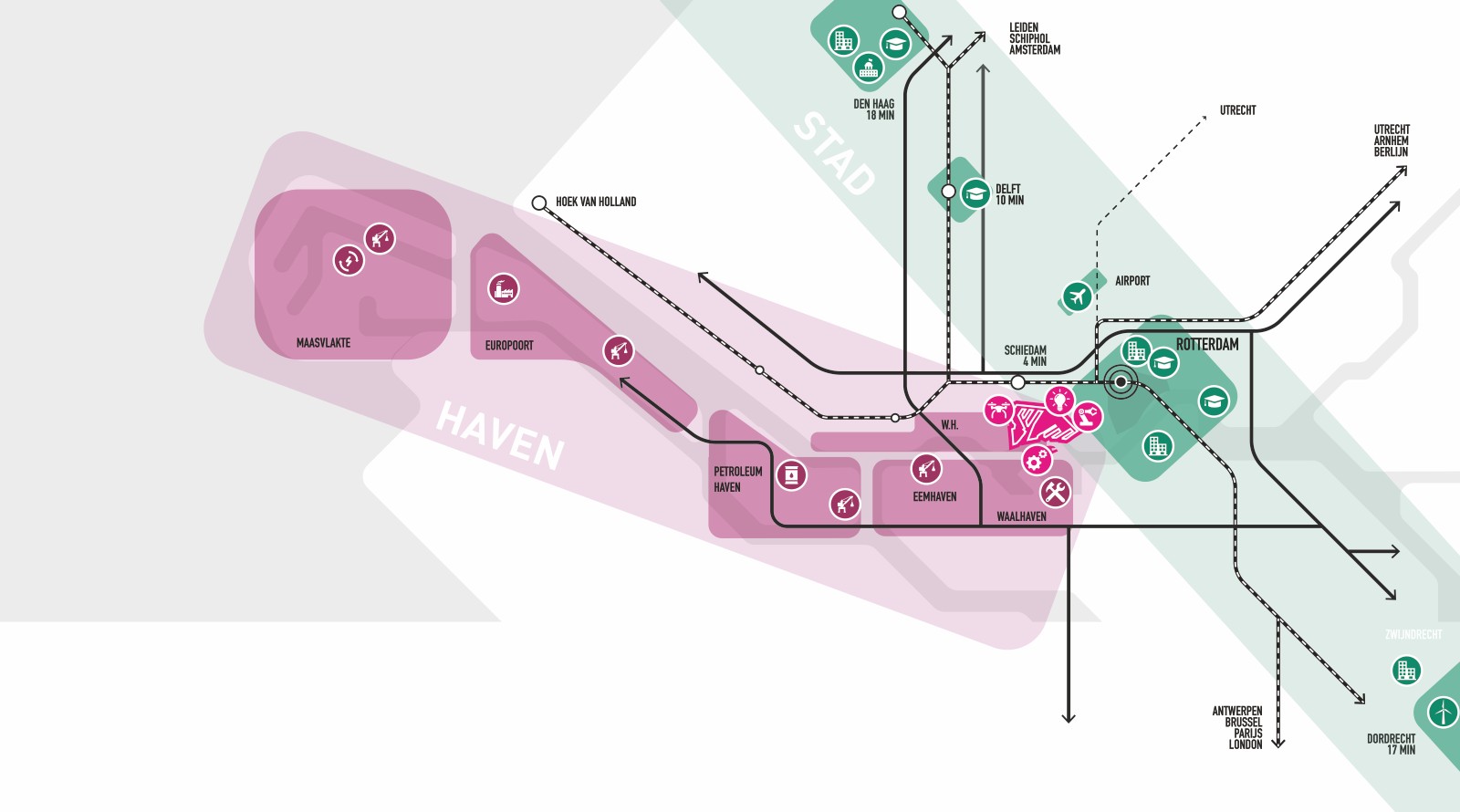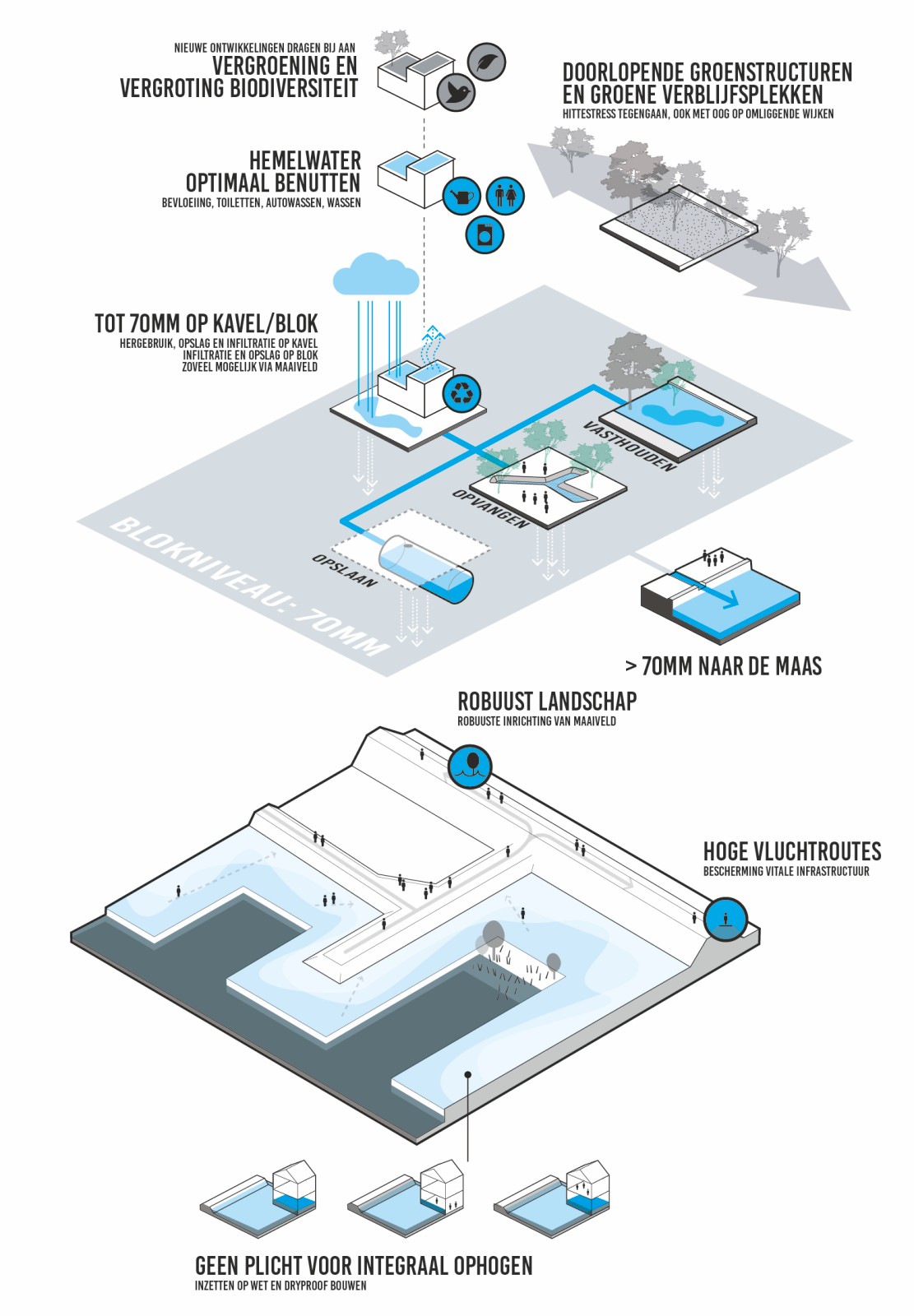This port area, as large as the inner city of Rotterdam, is being further developed into the breeding ground for innovative manufacturing industry and the creation of a new piece of the city. It will be a place where the port and city together shape the future. In addition to innovative manufacturing companies, the Merwe-Vierhavens (M4H) also offers space for knowledge and educational institutions, creative makers, supporting services, housing, cultural facilities, hospitality and shops.
Through an intensive process, the framework has been formed with internal and external stakeholders. Two inspirational sessions with entrepreneurs and developers offered insight into the expectations of these groups for the area. Together with the proceeds from all previous plans, experts from the municipality, the Port Authority, DCMR (environmental service) and the municipality of Schiedam subsequently started working.
Guidelines
The area is being redeveloped together with developers and other “city makers”. The Spatial Framework that has now been established offers the first guidelines for the interpretation of the area. With the framework, developers, companies and other interested parties in the area know what opportunities are there, what quality level is required and what is expected of them. The spatial Framework forms the basis for a new zoning plan and for future investments.
Living, working, innovating
Together with RDM Rotterdam, M4H forms the Rotterdam Makers District. Space has been created here for (young) entrepreneurs and knowledge institutions from the new (creative) economy. The innovative manufacturing industry that is growing here can flourish further in a city district as “a bustling urban environment with housing, hospitality, education and culture”.
The spatial framework identifies a number of sub-areas, each with their own profile. The Galilei Park in the heart of the area has the space to accommodate the larger manufacturing companies. There is no place for living here, but there is education, sports, culture and hospitality. There are various living and working environments around it. The highest densities are in the Marconikwartier. Keilekwartier and Gustoweg form the transition to work areas.
This is where creative and traditional manufacturing companies fit in, and wherever possible, combined with living. In the Merwehaven the emphasis is on living, combined with small and light businesses. Through the combination of working and living, M4H makes a substantial contribution to the inner-city building assignment of 50,000 homes in the Rotterdam region. Up to 2035, M4H will facilitate around 3500 to 5000 homes.
M4H makes it possible to opt for sustainable mobility
The task for the spatial framework consists not only of realizing good connections, but also of achieving a different relationship between individual car traffic and other forms of transport. This means a clear organization of car and truck traffic compared to slow traffic, a close-knit network for cyclists and walkers, collective transport systems and parking solutions in HUBs instead of the car on the street.
M4H builds on the industrial capacity and quality of the area
The current variation in buildings – high and low, wide and narrow, solitary and connected – forms the basis for the new volumes. The variation in construction volumes fits the programmatic mix. The appearance of the area will give the idea of an organically grown image, with different grain sizes in buildings and with clear contrasts.
M4H is a resilient climate adaptive system
M4H changes color from a stony plain on the water to a green veined area. Greenery that generates quality of life, reduces heat stress and introduces biodiversity. Building, streets, squares and parks together with the water form an inseparable whole in order to arrive at an interesting ecosystem. The basins also participate in certain places by introducing tidal parks. Together they make a positive contribution to the biotopes of the city and port on the M4H scale, but also on the urban fabric scale.
Guiding principles
Each of the principles expresses the ambition to develop M4H into a future-proof area. The eight guiding principles for sustainable area development all fit within all-encompassing theme: collectivity as the basis for circularity. No one can be circular on their own. Cooperation brings everyone further, not only in sustainability, but also in innovation. Seen in this way, the commitment to collectivity not only contributes to sustainability, but also to economic development. Source by DELVA.
- Location: Merwe-Vierhavens, Rotterdam, the Netherlands
- Architect: DELVA
- Team: DELVA + Municipality of Rotterdam + Port of Rotterdam
- Other team members: SITE urban development, Skonk, Goudappel Coffeng, KettingHuls, Plusoffice Architects
- Artist Impressions: DELVA, KettingHuls and A2 Studio
- Status: Spatial Framework (approved by the city and harbor of Rotterdam)
- Client: Rotterdam Makers District
- Year: 2019
- Images: Courtesy of DELVA

The spatial framework plan for 2050 
Image © DELVA 
Image © DELVA 
Image © DELVA 
Image © DELVA 
The makers district between port and city 
Historical development 
The breeding ground for innovation in the port and city 
The scale of M4H compared to the inner city of Rotterdam 
Concept of the framework 
Building structure outlines per zone 
Guiding Principle M4H offers permanent space to different types of makers 
Guiding Principle M4H makes it possible to opt for sustainable mobility 
Guiding Principle M4H works as a resilient climate adaptive system 
Guiding Principle M4H builds on the industrial capacity and quality of the area

